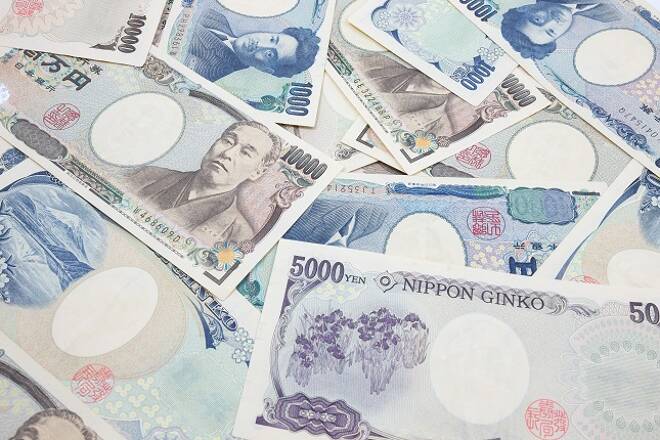Advertisement
Advertisement
USD/JPY Fundamental Daily Forecast – Tight Trading Range as Investors Prepare for Jackson Hole Symposium
By:
Japan’s core consumer prices narrowed their annual pace of declines for three straight months in July.
The Dollar/Yen finished nearly flat on Friday as a rise in demand for riskier U.S. stocks helped dampen the safe-haven appeal of the Japanese Yen, creating an offsetting trade. Also helping to underpin the greenback was a slight rise in U.S. Treasury yields. There were no major economic reports from the United States which helped drive down volume and volatility.
On Friday, the USD/JPY settled at 109.791, up 0.010 or +0.01%.
When there aren’t a lot of worries in the market, Dollar/Yen investors revert to the carry-trade, i.e. they buy risky assets and sell the Japanese Yen after borrowing from Japanese banks at extremely low interest rates. That’s probably what we saw on Friday following a volatile trade throughout the week tied to Wednesday’s release of the Federal Reserve minutes and worries over the COVID surge.
The USD/JPY may have been supported on Friday as Wall Street rallied and Fed jitters waned. The major U.S. stock indexes closed sharply higher, closing out a tumultuous week on easing concerns over whether the U.S. Federal Reserve could begin tightening its dovish monetary policy sooner than expected.
Friday’s Dollar/Yen price action also reflected the mixed performance in U.S. Treasury markets. Yields moved sideways amid continued uncertainty about the spread of the delta variant and discussion from the Fed tapering bond purchases.
The yield on the benchmark 10-year Treasury note rose 1 basis point to 1.257%. The yield on the 30-year Treasury bond dipped less than a basis point to 1.868%.
Although Treasury yields surprisingly ebbed lower all week, the USD/JPY remained firm as the latest meeting minutes from the Federal Reserve, released on Wednesday, showed that central bankers were planning to taper bond purchases before the end of the year.
In addition, concerns about the spread of the delta variant continued to weigh on sentiment.
In economic news, Japan’s core consumer prices narrowed their annual pace of declines for three straight months in July, a sign global commodities inflation was offsetting some of the deflationary pressure from a pandemic-induced spending slump.
But analysts expect consumer inflation to stay well below levels seen in the United States and Europe, as Japan’s decision on Tuesday to extend state of emergency curbs into mid-September is seen dealing a blow to already weak household spending.
Short-Term Outlook
We’re expecting more of the same choppy, two-sided trading over the short-term as many of the major players take to the sidelines ahead of the central bankers’ summit at Jackson Hole, Wyoming on August 26-28. Market participants will be awaiting insights into the Fed’s “taper talks” as many central bankers aim to move away from easy policy.
For a look at all of today’s economic events, check out our economic calendar.
About the Author
James Hyerczykauthor
James Hyerczyk is a U.S. based seasoned technical analyst and educator with over 40 years of experience in market analysis and trading, specializing in chart patterns and price movement. He is the author of two books on technical analysis and has a background in both futures and stock markets.
Did you find this article useful?
Latest news and analysis
Advertisement
